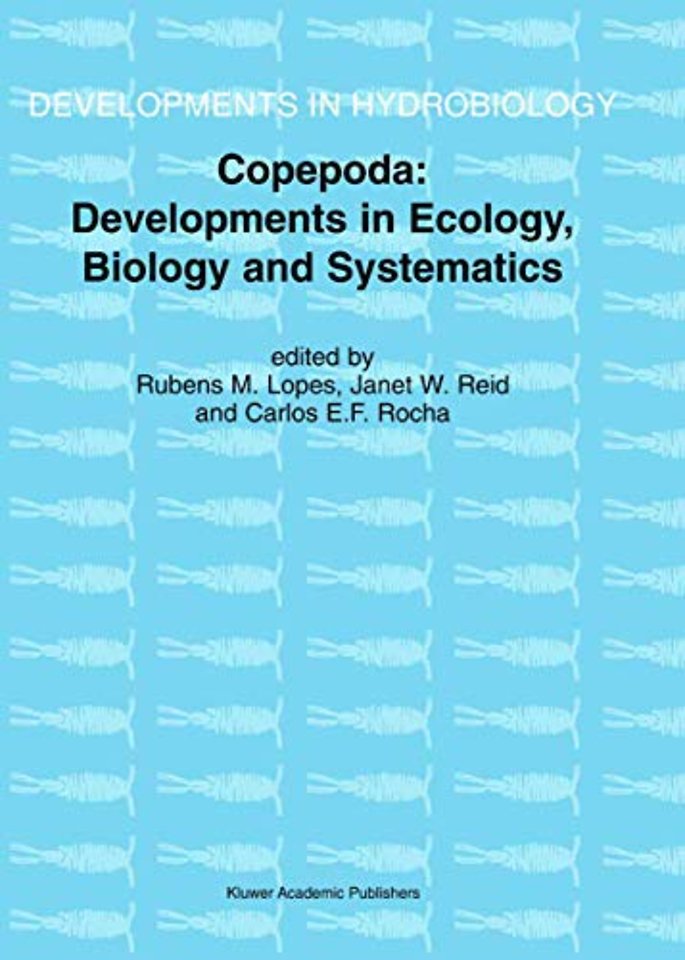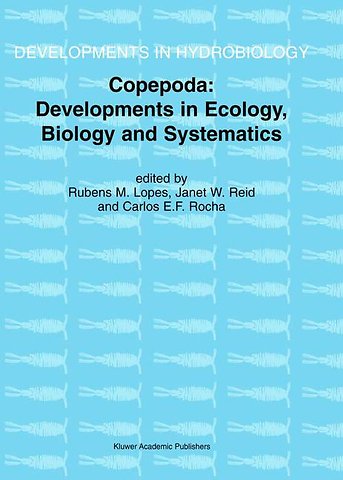Preface. Photograph and List of Participants. Maxilliped Lecture. Why do symbiotic copepods matter? J.S. Ho. Biology and ecology of Antarctic and Subantarctic copepods. Specific aspects of the study of the life cycles of Antarctic copepods; S.B. Schnack-Schiel. Feeding patterns of dominant Antarctic copepods: an interplay of diapause, selectivity, and availability of food; A.F. Pasternak, S.B. Schnack-Schiel. The deep-sea copepod fauna of the Southern Ocean: patterns and processes; P. Ward, R. Shreeve. Production and fate of faecal pellets during summer in an east Antarctic fjord; K.L. Beaumont, et al. Effects of the ice edge-bloom and season on the metabolism of copepods in the Weddell Sea, Antarctica; H.G. Kawall, et al. The effect of the receding ice edge on the condition of copepods in the northwestern Weddell Sea: Results from biochemical assays; S.P. Geiger, et al. Ecology, distribution and biology of marine copepods. Patterns in stage durations and development among marine and freshwater calanoid and cyclopoid copepods: a review of rules, physiological constaints, and evolutionary significance; W.T. Peterson. Feeding, egg production, and egg hatching success of the copepods Acartia tonsa and Temora longicornis on diets of the toxic diatom Pseudo-nitzschia multiseries and the non-toxic diatom Pseudo-nitzschia pungens; J.A. Lincoln, et al. Summer egg production rates of paracalanid copepods in subtropical waters adjacent to Australia's North West cape; A.D. McKinnon, S. Duggan. Size paradigms in copepod communities: a re-examination; R.R. Hopcroft, et al. The influence of coastal upwelling on the distribution of Calanus chilensis in the Mejillones Peninsula (northern Chile): implications for its population dynamics; R. Escribano, et al. Succession of pelagic copepod species during 1996-1998 in northern Chile: the influence of the 1997-98 El Niño; P. Hidalgo, R. Escribano. Spatial distribution of copepod genera along the Atlantic Meridional Transect; R. Woodd Walker. Biogeography of the family Acartiidae (Calanoida) in the Ponto-Mediterranean Province; G. Belmonte, D. Potenza. Temporal Variability and production of Euterpina acutifrons (Copepoda: Harpacticoida) in the Cananéia Lagoon estuarine system, São Paulo, Brazil; K. Ara. Harpacticoid copepod communities of floating seaweed: controlling factors and implications for dispersal; E. Ólafsson, et al. Copepods in challenging environments. A human challenge: discovering and understanding continental copepod habitats; J.W. Reid. Groundwater copepods: diversity patterns over ecological and evolutionary scales; D.M.P. Galassi. Harpacticoid copepods are successful in the soft-bottom deep sea; D. Thistle. Ecology of freshwater copepods. Effect of the cyclopoid copepod Mesocyclops thermocyclopoides on the interactions between the predatory rotifer Asplanchna intermedia and its prey Brachionus calyciflorus and B. angularis; R. Kumar, T.R. Rao. Two calanoids, two lakes, and a decade or two. An updated record and evaluation of occurrence and periodicity of Tropodiaptomus spectabilis and Metadiaptomus meridianus (Copepoda: Calanoida), and alternative stable states in two cascading impoundments; R.C. Hart. Life cycles of the two freshwater copepods Cyclops strenuus Fischer and Cyclops insignis Claus (Cyclopoida, Copepoda) in an amphibious floodplain habitat; D. Frisch. Diapause i

